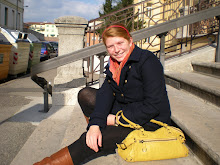Tracy Kidder, Pulitzer Prize winner and renowned author, spoke at Roger Williams University about his experiences as a journalist and author. His most recent nonfiction story, “Mountains Beyond Mountains” was the central topic of discussion.
The book focuses on two main issues, the global health crises, tuberculosis and AIDS. Kidder shadowed Dr. Paul Farmer, an ambitious doctor hell bent on establishing clinics and hospitals in Haiti. The success of his novel has led to traveling throughout the country in order to speak to college students who have read the book as part of the school’s curriculum.
Kidder evokes relaxation and serenity. He is an approachable professional who was truly encouraging to the Roger Williams students who attended his discussion. His set-up was atypical for speakers. He did not lecture; instead chairs were placed in a circle. Kidder made the situation a welcoming environment.
Aside from talking about “Mountains Beyond Mountains,” Kidder touched upon his life as a writer. Kidder has written several books and had work published in magazines throughout his lifetime. He explained that writing a book is an enormous commitment. Research can almost seem endless; in fact, research is supposedly the fun part. It is commonly the editor, at least in Kidder’s case, who determines when the research ends and the writing begins.
Kidder’s writing career began during his sophomore year of college. He felt strong impulses to continue writing after taking a class focusing on Short Stories/Fiction. Aside from his intuition, the thought of being his own boss proved to be an appealing perk.
Kidder seems to be a pretty good boss. With a Pulitzer Prize under his belt and several successful books, his career is what a writer strives to achieve. His inspirations for all of his pieces come almost accidently though. He believes inspiration comes from everywhere and anywhere, but a good writer or journalist must go out into the world and experience things first hand to find a good story.
“Writing is the only real thinking I do,” Kidder commented.


